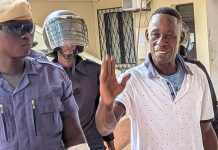This Column is meant to monitor and report on issues that concerns the people of the rural communities, in terms of how their development is hindered or facilitated. Rural development is a process that aims to improve the standard of living of people in the rural communities.
According to Robert chambers, rural development is a strategy that enables a specific group of people, poor rural women and men, gain for themselves and their children, more of what they want and need.
It involves helping the poorest among those who seek a livelihood in rural communities, to demand and control more of the benefits of rural development. The group includes small scale farmers, tenants and the landless.
Thus the term rural development, may be used to imply any one of the above-mentioned connotations.
To avoid the ineffective floundering among the myriad of definitions, we shall define rural development as a process leading to sustainable improvement in the quality of life of rural people, especially the poor. According to Lamin Sambou Kinteh, for rural development to be meaningful and realizable, the trinity of development such as electricity, water and rural infrastructural development like roads, industries, schools, health facilities etc., must be present.
Livestock production in The Gambia is still based on the traditional low input free range system, where cattle is herded during the day and tethered on the outskirts of villages during the night.
This system is dependent on natural pasture as feed source for the animals and hence access routes to these grazing and watering points are crucial. Nowadays, due to factors such as population increase of both human and livestock, lack of land use planning, and unsustainable exploitation and use of natural resources, has caused settlements and crop farms to extend into rangelands, reducing grazing space and restricting access to grazing areas. This has resulted into seasonal livestock feed deficits which is a great constraint to livestock development and a concern for livestock farmers. Improvement and security of rangelands and routes are most invaluable, to the increase livestock production in the country today.
Such routes were identified by communities concerned, with the consent of members in the form of a written agreement, signed by all. The routes have been demarcated wide enough to satisfy the requirement of both farmers and herders. The sites have been geo-referenced so that they permanently exist on maps and are marked with concrete pillars to define the boundaries for sustainability.
Since 2009, a total of 216 kilometres of stock route have been demarcated at PROGEBE primary sites (Kiang West, Niamina East, Nianija and seceondary sites (Kombo East and Sami) and adjacent districts (Upper and Lower Saloum, Niani, Fulladu and Niamina West). Management Committees have been established and management protocols developed to ensure their proper use, to prevent and address conflict situations. An impact assessment after three years revealed that community members especially crop and livestock farmers, benefited from increased production as a result of improved access to pasture and reduced crop damage. There has been significant drop in conflict between herders and crop farmers as well as Court cases related to such issues. To ensure sustainability of the routes, proper Land use and allocation planning was promoted allowing communities to draw their own land.
There should be policy directives involving Regional and Local authorities to institutionalize land use planning at the community level, including the demarcation of routes and grazing areas by setting clear and permanent boundaries. The department of livestock services and other livestock related projects, should capitalize on the PROGEBE experience and replicate this process in other areas of the country, to avoid conflict between crop and livestock farmers.


















